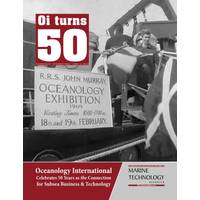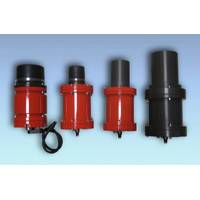
Oi: Tracking 50 Years of Ocean Innovation
industry boomed and oceanographic and submersible technology – building on the developments that had come before it - advanced to meet these new demands. “Building on technology like the CURV, the offshore oil and gas industry created the work-class ROVs to assist in the development of offshore oil fields,” says Jaeger. “More than a decade after they were first introduced, ROVs became essential in the 1980s, when much of the new offshore development exceeded the reach of human divers.”In 1980, Spearhead Exhibitions, run by David Stott, who had founded Hydrospace magazine in

Aquaterra Bags More Johan Sverdrup Work
the new wells. Equinor has already reduced the total estimated investment by 6 billion NOK since February of this year. Our goal is to keep costs low by continuing to streamline their early well construction operations to reduce time to first oil.”Johan Sverdrup is one of the largest offshore oil fields on the Norwegian continental shelf, with estimated reserves of up to 3.2 billion barrels of oil equivalent. The project includes the next 16 wells of the field’s development, including measures to facilitate power from shore to the Utsira High. Production start-up is planned for Q4 2022

LinkQuest Reports Continued Success Offshore
field reservoirs in large-scale deployments, real-time deepwater multi-sensor data monitoring and deepwater real-time AUV data communication. LinkQuest's underwater acoustic modems are based on proprietary Broadband Acoustic Spread Spectrum Technology and have been extensively used in the offshore oil fields worldwide over the years. LinkQuest produces a number of acoustic modem models designed for various application scenarios and environment conditions. The company said it leverages its experience in offshore oilfield applications and competence in theoretical analysis, working with

Greenpeace Targets Russian Tanker at Rotterdam Port
explained by the desire to make an impression on the general public without thinking about the consequences”. Currently the tanker Mikhail Ulyanov is safely moored at the terminal. The Tanker Mikhail Ulyanov is an Arctic shuttle tanker was designed to transport oil by sea from Russian offshore oil fields and built in Russia. The ship was built in accordance with the Rules of Dual Registry of the Russian Registry of Shipping and Lloyd’s Register. “Sovcomflot’s fleet is routinely surveyed by Lloyd’s Register (LR) and other members of the International Association of

Prysmian Awarded Emirates Contract
systems to Zakum offshore oil field, in Abu Dhabi. The Zakum oil field is the first submarine electrification project planned by ADMA-OPCO and will be the benchmark for future projects aimed at developing and implementing a power distribution and transmission network among owned offshore oil fields, in order to increase capacity and improve reliability of their oil production facilities. In detail, the project includes the design and supply of about 200 km of XLPE (Cross-Linked Polyethylene) insulated Medium Voltage submarine cables for the distribution of energy to oil towers
Saipem: A Fleet Grows in Brazil
modules. Preparatory work began in the second half of 2010, while underwater installation operations began in the second half of 2012. Vergine said Saipem has invested heavily to make these new deals in Brazil possible. “Let’s look at Brazil. A closed market where the discovery of big offshore oil fields has created huge perspectives. To enter that market we first closed small deals and now we’re negotiating on a completely different basis.” Since 2012, Saipem has been operating the MV Castorone, a pipelay vessel with an overall length of 330 m (1,082 ft), excluding stinger
Cenpes Leading Petrobras’ R&D Effort
period, which covers the investment plan, had allowed Petrobras to reduce its net financing needs by 50% compared with the 2012-2016 investment plan. Petrobras also expects to raise about $9.9b from divestments as part of the plan. Petrobras has plans to invest $236.7b to develop massive offshore oil fields recently discovered off Brazil’s coast, virtually the same level as their last investment plan. Of the total sum planned, $207.1b of the investments are classified by the national operator as under implementation. Crude oil production is expected to reach 2.75 million barrels boe per

Wärtsilä Powered FPSO Passes Load Tests
with Wärtsilä 50DF dual-fuel engines which passed load tests. This FPSO is the first such ship to utilize gas engines to produce more than 100 MWe of power. The tests were carried out at the Cosco shipyard in Dalian, China and the vessel will commence operations in Brazil’s offshore oil fields in 2013. Wärtsilä was contracted by the Brazilian industrial group QUIP, to provide a turnkey package for this vessel. The package includes three main power modules, each comprising two 18-cylinder Wärtsilä 50DF engines in V-configuration, alternators and all required



 February 2024
February 2024





